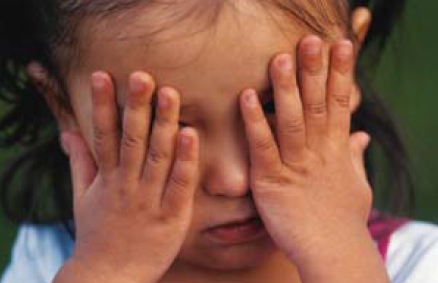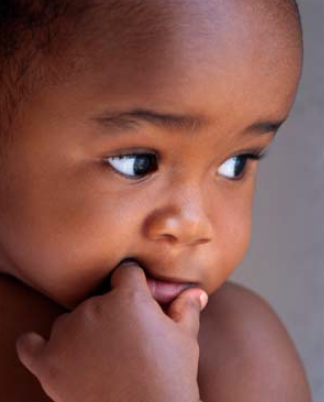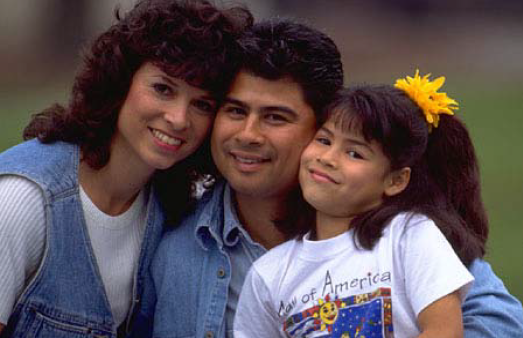Introduction
The well-being of children, particularly those who are abused or neglected, has been a longstanding concern. Legislation, which defines child abuse and determines the appropriate role for child welfare agencies, has been a part of state statutes for over 20 years.

What is Child Abuse and Neglect?
Child abuse is defined in the Nevada Revised Statutes (NRS) 432B.020 as follows: “Abuse or neglect of a child means: Physical or mental injury of a non-accidental nature; sexual abuse or sexual exploitation; or negligent treatment or maltreatment caused or allowed by the person responsible for his welfare under circumstances which indicate that the child’s health or welfare is harmed or threatened with harm.”
Nevada ranks among the highest in the nation in the number of reported cases of child abuse and neglect per 1,000 children.
The National Child Abuse and Neglect Data System (NCANDS) reports for 2010 that of the 681,033 children in Nevada, there were 4,947 substantiated cases of child abuse and neglect and 12,940 unsubstantiated cases (see Table 1).
Substantiated cases are investigations that conclude that the allegation of maltreatment or risk of maltreatment was supported or founded by state law or state policy.
Unsubstantiated cases are investigations that determine there is not sufficient evidence under state law to conclude or suspect that the child has been maltreated or is at risk of being maltreated.
Child abuse reports remain high, despite a corresponding decrease in the number of substantiated cases in Nevada. The number of children confirmed to be victims of abuse and neglect continues to a number just under 5,000.
Table 1. Types of Maltreatment Nevada 2010
| Maltreatment |
Number |
Percent (%) |
| Neglect |
3545 |
71.7% |
| Physical Abuse |
1525 |
30.8% |
| Sexual Abuse |
349 |
7% |
| Medical Neglect |
98 |
2% |
| PsychologicalMaltreatment |
78 |
1.5% |
| Total Victims |
4947 * |
| *Note: Many victims are subject to multiple types of maltreatment and more than one incident, therefore the number of individual types exceeds the total. |
Who Must Report?
According to NRS 432.B121(1) any person who has “reasonable cause to believe” child abuse may be occurring or has occurred may report to a Child Protective Services (CPS) or law enforcement agency. Mandated reporters are those persons, who in their professional or occupational capacities, know or have reason to believe that a child has been abused or neglected. Mandated reporters include the following:
- A physician, dentist, dental hygienist, chiropractor, optometrist, podiatrist, medical examiner, resident, intern, professional or practical nurse, physician’s assistant, psychiatrist, psychologist, marriage and family therapist, alcohol or drug abuse counselor, athletic trainer, advanced emergency medical technician ambulance or other person providing medical services licensed or certified in Nevada.
- Any personnel of a hospital or similar institution engaged in the admission, examination, care or treatment of persons.
- A coroner.
- A clergyman, practitioner of Christian Science or religious healer.
- A social worker, administrator, teacher, librarian or counselor of a school.
- Any person who maintains or is employed by a facility or establishment that provides care for children, children’s camp or other public or private facility, institution or agency furnishing care to a child.
- Any person licensed to conduct a foster home.
- Any officer or employee of a law enforcement agency or an adult or juvenile probation officer.
- An attorney, unless he has acquired the knowledge of the abuse or neglect from a client who is or may be accused of the abuse or neglect.
- Any person who maintains, is employed by or serves as a volunteer for an agency or service that advises persons regarding abuse or neglect of a child and refers them to persons and agencies where their requests and needs can be met.
- Any person who is employed by or serves as a volunteer for an approved youth shelter.
- Any adult person who is employed by an entity that provides organized activities for children.
Anyone required to make a report who knowingly and willfully violates the provisions of NRS 432B.220 is guilty of a misdemeanor (NRS 432.B.240). Persons required to report may not invoke any of the privileges granted under Chapter 49 of NRS relating to patient or client confidentiality.
Effective October 1, 2005, a new section has been added to the list of persons required to report suspected child abuse or neglect (NRS 432.220(3). The new section includes “any person who is described in paragraph (a) of subsection 4 who delivers or provides medical services to a newborn infant and who, in his professional or occupational capacity, knows or has reasonable cause to believe that the newborn infant has been affected by prenatal illegal substance abuse or has withdrawal symptoms resulting from prenatal drug exposure shall, as soon as reasonably practicable but not later than 24 hours after the person knows or has reasonable cause to believe that the newborn infant is so affected or has such symptoms, notify an agency which provides child welfare services for the condition of the infant and refer each person who is responsible for the welfare of the infant to an agency which provides child welfare services.”

What to Report
According to NRS432B.230, a child abuse or neglect report may be made verbally by telephone or otherwise.
“The report must contain the following information, if obtainable:
- The name, address, age and sex of the child.
- The name and address of the child’s parents or other person responsible for his care.
- The nature and extent of the abuse or neglect of the child; the effect of prenatal illegal substance abuse on the newborn infant or the nature of the withdrawal resulting from prenatal drug exposure of the newborn infant.
- Any evidence or previously known or suspected abuse or neglect of the child or the child’s siblings or effects of prenatal illegal substance abuse on or evidence of withdrawal symptoms resulting from prenatal drug exposure of the newborn infant.
- The name, address and relationship, if known, of the person who is alleged to have abused or neglected the child.
- Any other information known to the person making the report that Child Welfare Services considers necessary.”
When and Where to Report
According to Nevada Revised Statute 432B.121(1), persons are required by law to report as soon as reasonably practicable but not later than 24 hours after the person knows or has reasonable cause to believe that the child (under 18 years old) has been abused or neglected. Reports should be made to the local office of the Nevada Division of Child and Family Services, to any county agency authorized by the juvenile court to receive such reports, or to any police department or sheriff’s office when there is reason to believe that a child under 18 years of age has been maltreated.
Washoe County is required to report within 1 hour.
Perpetrators
Most perpetrators of child maltreatment are caregivers who have been found to have abused or neglected a child. In most cases, the perpetrator is a parent who is responsible for the child’s well-being (see Table 2).
In 2010, 56.5 percent of the perpetrators were women and 43.5 percent were men. Female perpetrators were typically younger than male perpetrators. The median age for perpetrators was 31 years for women and 34 years for men.
Table 2. Shows the Perpetrators by Relationship to the Victim (2010)
| Relationship to Victim |
Number |
% of Total |
| Natural Parent |
5,519 |
81.8% |
| Friends or Neighbors |
473 |
7% |
| Stepparent |
231 |
3.4% |
| Other Relative |
187 |
2.8% |
| Unknown Parental Type |
159 |
2.4% |
| Residential Facility Staff |
85 |
1.3% |
| Adoptive Parent |
38 |
0.5% |
| Other |
19 |
0.3% |
| Unknown |
16 |
0.2% |
| Foster Parent |
13 |
0.2% |
| Legal Guardian |
7 |
0.1% |
| Child Care Provider |
0 |
0% |
| Total Victims |
6,747 |
What Happens When a Report is Received?
When Child Protective Services (CPS) or law enforcement agencies receive a report of child abuse or neglect, they must initiate an investigation. If a child is under the age of five, there is a high risk of serious harm or the child is seriously injured, an investigation will begin immediately. If a case is lower risk, an evaluation will be made within three days to determine if a formal investigation is needed.
During an investigation, information is gathered by CPS. Interviews are conducted with the child, the child’s caregiver, parents and/or guardian, and any other person who may have information regarding the child’s situation. The child’s age, development, family history, home environment and other risk factors are assessed. In lower risk cases, children are allowed to stay in the home and parents or guardians may be offered services. In higher risk cases, a child may be placed in protective custody. A Protective Custody Hearing is held within 72 hours and a judge determines whether a child will remain in custody. Children requiring longer term care are placed in foster care with either relatives or licensed foster parents.
- In 2010, there were 4,806 children in foster care in Nevada, compared with 4,779 in 2009.
- The average age of a child in foster care was 6.5 years, and the average length of stay was 16 months.
- There are over 1,178 foster care homes in Nevada. Thirty-four percent (34%) of the children in foster care reside with their relatives. Of the 2,833 children exiting out-of-home care in 2010, 61 percent were reunited with their parents or other family members.
- Prevent Child Abuse Nevada (PCA) is a chapter of the national organization, Prevent Child Abuse America. They offer services statewide to professionals, children, parents, and the community at large. They provide training on mandated reporting for a nominal fee for continuing education credit for childcare providers and educate community members on various issues associated with child abuse and preventing child abuse. They can be contacted at 702-895-1040. Please visit their website at: PCA.
- Additional Resources
- Recognizing Child Abuse and Neglect (Fact Sheet-06-25, Updated 03-2012) contains information on what is considered abuse or neglect and includes a list of physical and behavioral indicators.
- Responding to a Disclosure of Child Abuse (Fact Sheet– 01-60). Offers information about how to respond if a child tells you they have been abused.

Reporting
Reports can also be made by dialing the Child Abuse Hotline at 1-800-992-5757 for all areas of the state except Clark and Washoe Counties.
In Clark County, call 702-399-0081. In Washoe County, call 775-785-8600 or call your local sheriff.
The legal responsibility of the professional is to report suspected incidents of child abuse. The person making the report is usually not informed of investigation results.
If the person making the report is concerned about the adequacy of the investigation and is not able to remedy the situation with the local agency, contact: Systems Advocate Unit
References
- Administration for Children and Family: Child Maltreatment 2010: National Report. Table 5-5 Perpetrators by Relationship to their Victims, 2010. Available at: ACF.
- Child Welfare League A Fact Sheet: Nevada’s Children 2012, Child Welfare League of America.
- Department of Child and Family Services - Foster Care Available at: DCFS.
- Nevada Department of Human Resources, Division of Child & Family Services, Nevada Child Abuse & Neglect Statistics
- Nevada KIDS COUNT, 2010, Center for Business and Economic Research, University of Nevada Las Vegas.
- Reports of Abuse or Neglect. Nevada Revised Statutes, 432B.020 - 432B.330
- State of Nevada, Division of Child and Family Services: Reporting Child Abuse and Neglect.
- U.S. Department of Health and Human Services, Administration of Children, Youth and Families, Child Maltreatment Report 2010, Washington, D.C.: U.S. Government Printing Office, 2010, Available at: CWIG.
Kock, J., Agao, V., Byington, T., and Martin, S.
2006,
Reporting Child Abuse and Neglect,
Extension | University of Nevada, Reno, FS-06-26


